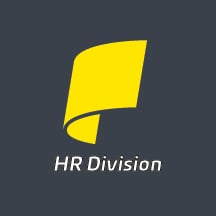**This blog is part of an ongoing series addressing the current labor shortage.
As workers exit the workplace in record numbers, employers face unprecedented challenges, including the high costs associated with positions that continue to go unfilled.The Current Labor Shortage
By the end of 2021, there were 10.9 million job openings, and approximately 6.3 million people who were unemployed. Many workers quit their jobs, either leaving the workforce or choosing other opportunities.
▶️▶️Read More: Causes Driving the Labor Shortage
Many factors have led to the record-breaking number of workers quitting in what is being called "The Great Resignation." Some of the most common reasons include the desire for more work-life balance, flexibility, better benefits, and the lack of childcare options. Many are also changing jobs to take advantage of better opportunities in a candidate-driven market. Studies show that workers aren’t just leaving the service industry or low-level, low-paying positions. All industries are experiencing a shortage of workers.
 A new study, Stop The Exit, shows an unprecedented resignation rate among employees with mid-level positions, between the ages of 40-45. More women are leaving their jobs at a higher rate than men.
A new study, Stop The Exit, shows an unprecedented resignation rate among employees with mid-level positions, between the ages of 40-45. More women are leaving their jobs at a higher rate than men.
The situation doesn’t seem to be changing any time soon. According to a Gallup study, 48% of employed workers are actively job hunting or watching for new opportunities. Over the next 12 months, 55% of workers will leave their jobs, and one in three plan to leave in 2023.
The Cost of Employee Turnover
Struggling to find the right applicants, businesses are forced to spend more to recruit and retain workers, with hiring and benefits costs hitting a 16-year high. It’s estimated that losing an employee can cost a company 1.5 to 2 times the employee’s salary. The cost can vary depending on many different factors. For hourly workers, the average cost of turnover is about $1,500 per employee.
 And to replace an executive-level position, the cost can reach as high as 213% of salary. The cost also increases for certain skilled trade positions. For example, a recent study on the costs of hiring workers in the tech industry, found that employers spend 100-150% of salary to fill a position.
And to replace an executive-level position, the cost can reach as high as 213% of salary. The cost also increases for certain skilled trade positions. For example, a recent study on the costs of hiring workers in the tech industry, found that employers spend 100-150% of salary to fill a position.
Cost Per Hire. The cost per hire (CPH) is a metric Human Resources professionals use to measure the costs associated with filling a vacancy, including the internal, external, direct, and indirect costs required to source, recruit and staff the opened position.
According to a study by the Society of Human Resource Management (SHRM), the average CPH is $4,100. However, several factors may affect a company’s average cost, such as type of business, business size and industry. Also, the longer it takes to fill a position, the higher CPH. An overall CPH can be calculated using the following formula:
▶️Internal Recruiting Costs + External Recruiting Costs / by the Total Number of Hires = Cost Per Hire.
External Costs. External costs commonly include expenses paid to external vendors or individuals during the recruiting process, such as advertising and marketing costs, background checks, eligibility to work, and drug-testing fees, for example.
Internal Costs. These costs include expenses related to the internal staff, capital, resources, and business expenses for recruitment and staffing, such as staff, internal overhead for compliance, and non-labor office costs.
Depending on the metric, employers may use some of the above costs or different data specific to their business to calculate their CPH.
Cost Per Day. Another way to look at the cost for positions that go unfilled is to take the position’s:
▶️Annual salary / by 220 Working Days x the Average Days it generally takes to hire. For example, if the base pay is $75,000 and it normally takes 30 days to fill the role, the unfilled position can cost a company $340.90 per day and $20,454 in 60 days.
Training and Onboarding Costs. There are also high costs associated with the time and resources required to onboard and train a new hire after an employee leaves.
 Training New Employee. A 2020 Training Industry Report conducted by Training Magazine shows that businesses in the U.S. spend an average of $1,111 per employee on training costs.
Training New Employee. A 2020 Training Industry Report conducted by Training Magazine shows that businesses in the U.S. spend an average of $1,111 per employee on training costs.
Onboarding New Employees. According to LinkedIn, employers spend about $3,000 on onboarding a new employee.
Intangible Costs Associated With Job Vacancies. The impact of high employee turnover and unfilled positions goes well beyond the financial costs. It’s estimated that two-thirds of the associated costs are intangible. These include:
- Loss of experience and knowledge of former employees
- Lower morale in the workplace
- Increased overtime costs to employers
- Additional stress on the remaining workers who are required to take on additional roles and responsibilities
- Business disruption or incomplete projects
- A decrease in productivity. According to a report by Gallup, employee disengagement costs the overall U.S. economy as much as $350 billion every year. Unhappy employees show up in the form of tardiness, missed workdays and decreased productivity. In fact, Gallup estimates that a disengaged employee costs an employer approximately $3,400 for every $10,000 of salary, or 34%.
And the longer the job vacancy, the more workers are likely to leave. At some point, the effect of all of these factors increases the cycle of turnover.
▶️▶️Read More: How to Attract Great Employees
Long-term Costs. Beyond the expenses related to recruitment, there are also costs that add up over time. For example, a shortage of labor can result in the loss of revenue and the loss of current customers and potential new business.
 Cost of a Wrong Hire. No business needs the wasted time and added expense that comes with hiring an employee who is not a good fit. While it may be tempting to rush the hiring process, it’s important to avoid making a costly mistake.
Cost of a Wrong Hire. No business needs the wasted time and added expense that comes with hiring an employee who is not a good fit. While it may be tempting to rush the hiring process, it’s important to avoid making a costly mistake.
The U.S. Department of Labor estimates that making a wrong hiring decision can cost up to 30% of the employee’s first year of potential earnings. And there’s also the added costs associated with employee benefits, bonuses and incentives, and any severance resulting from the employee’s separation.
According to a study conducted by Robert Half International, 34% of CFOs reported that hiring employees who were not a good fit also resulted in costs related to lower employee morale and productivity.
Curbing Turnover
Employees are perhaps the most important and expensive investment an employer makes. When an employee leaves, it can be a big hit on your company’s morale, productivity, and your bottom line.
 About Propel HR. Propel HR is an IRS-certified PEO that has been a leading provider of human resources and payroll solutions for more than 25 years. Propel partners with small to midsized businesses to manage payroll, employee benefits, compliance and risks, and other HR functions in a way that maximizes efficiency and reduces costs. Visit our new website at www.propelhr.com.
About Propel HR. Propel HR is an IRS-certified PEO that has been a leading provider of human resources and payroll solutions for more than 25 years. Propel partners with small to midsized businesses to manage payroll, employee benefits, compliance and risks, and other HR functions in a way that maximizes efficiency and reduces costs. Visit our new website at www.propelhr.com.









